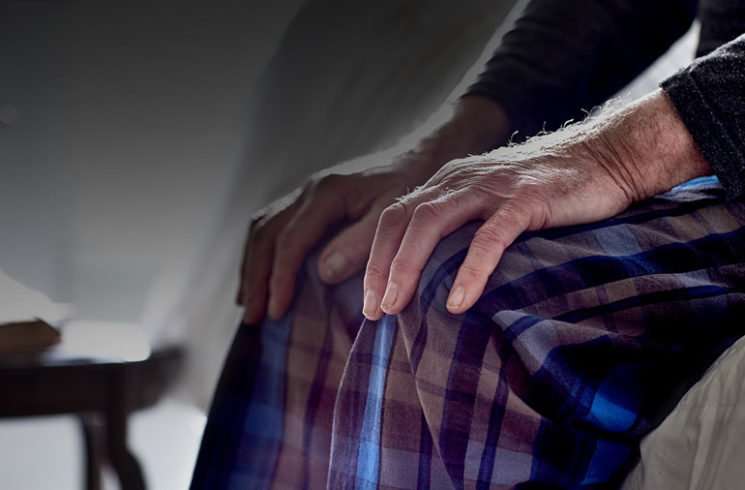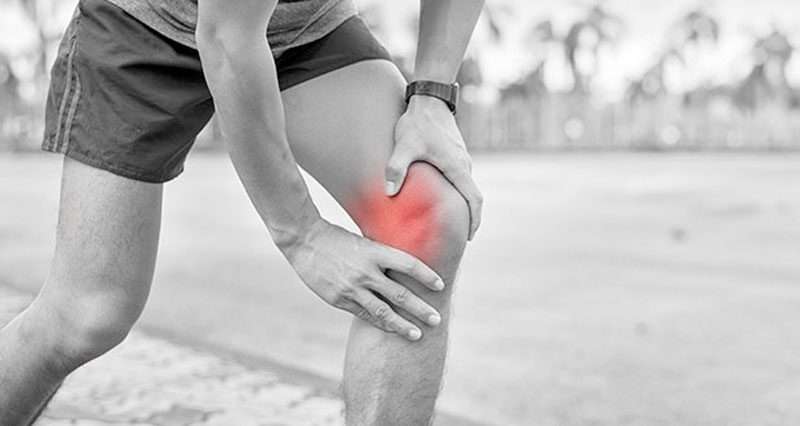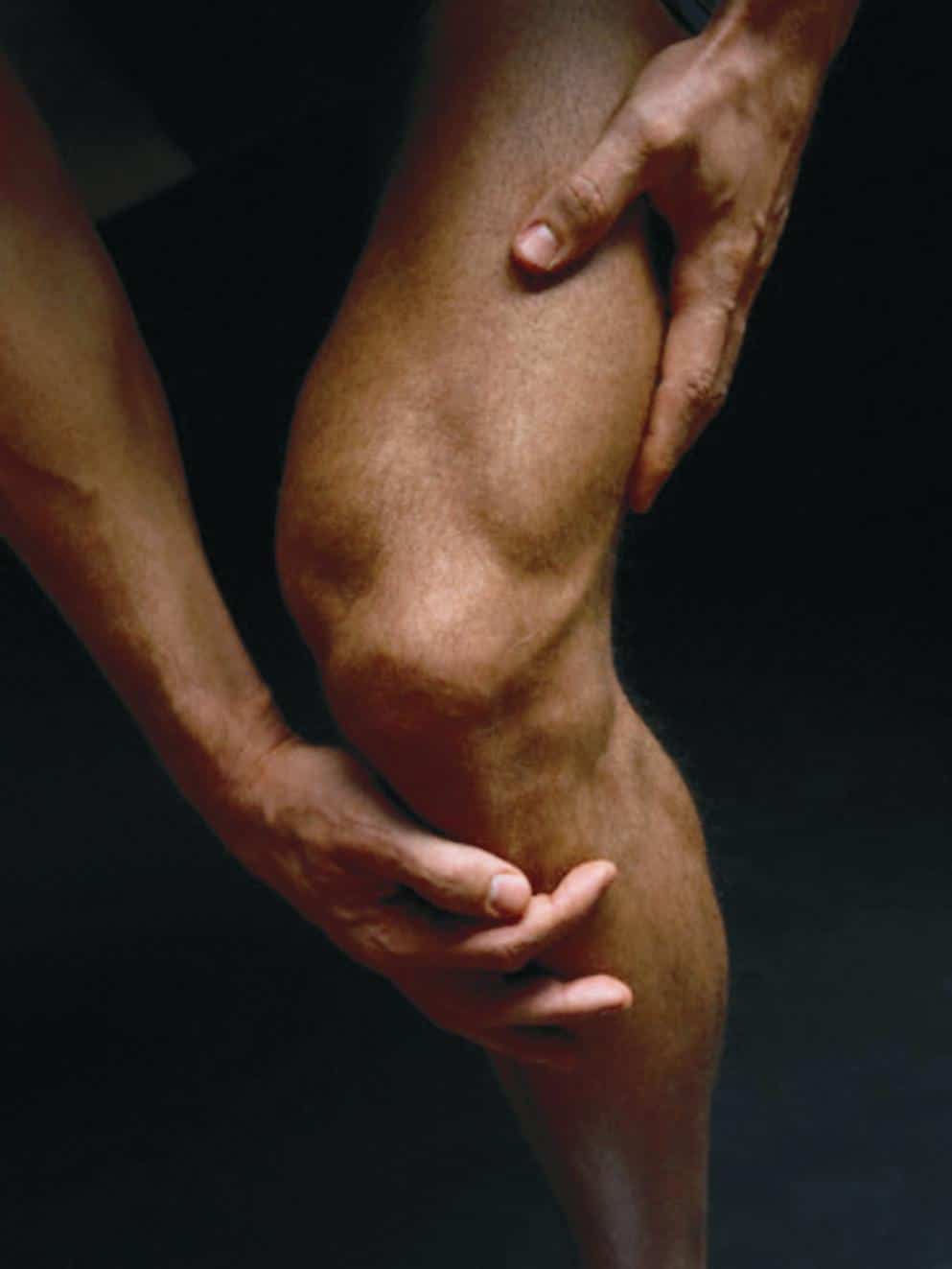Sharp Knee Pain When Bending Your Back
If your knee pain occurs when reaching down to put your shoes on or any other back-bending activity, it is likely due to a problem in your lower back.
The gradual loss of core muscle tissue impacts your ability to keep the spine supported during these types of movements and compensation can occur.
TIPS TO AVOID PAIN: follow a proper exercise routine, focusing on strengthening the transverse abdominis to mitigate dysfunction. The TVA is considered the cores core and helps to stabilize the entire low back and core muscles. When you have a strong core, it surprisingly can improve many lower body aches and pains.
Sharp Knee Pain When Taking The Stairs
There are two directions/causes of this type of sharp knee pain.
When traveling up the stairs, this indicates a problem within the knees tibiofemoral joint. When traveling downstairs, the problem most likely stems from the knee cap.
Both of these are considered mechanical problems within the knee. Either way, the solution actually remains the same!
TIPS TO AVOID PAIN: if your knees arent aligned with the rest of your body, it can aggravate your knees causing the sharp pain with stairs. Start with these 3 simple stretches to realign your knees and relieve discomfort.
What Could Cause Sharp Knee Pain When Walking
Sharp pain in the knee is usually a sign that you have a knee injury. The injury may have occurred over a period of time, or it could have occurred from one specific incident. The quick answer is their are several structures in the knee that can lead to sharp pain. These include:
- Tendons
- Cartilage on the Joint Surfaces
- Meniscus
- Bursae
- Knee Cap
Whether you are a competitive athlete, weekend warrior, or someone who frequents the couch you may experience pain in the knee joint at some point during your life. If you want to learn more about the anatomy of the knee, please watch this VIDEO.
Knee Anatomy
Some common injuries of the knee that can cause pain in the knee joint or sharp pain may include:
Recommended Reading: When To Go To Er For Knee Pain
Recovering From Knee Bursitis
Bursitis knee symptoms usually settle within a few weeks with effective treatment. As mentioned, treatment varies depending on which bursa is affected, and you can find out more about the most common types of bursitis including treatment options and the recovery process:
- Infrapatellar Bursitis: below the knee
Posterior Cruciate Ligament Injury

What Is a Posterior Cruciate Ligament Injury?
The posterior cruciate ligament is the strongest ligament in the knee joint. Ligaments are thick, strong bands of tissue that connect bone to bone. The PCL runs along the back of the knee joint from the bottom of the thighbone to the top of the lower leg bone .
The PCL helps keep the knee joint stable, especially the back of the joint. An injury to the PCL could involve straining, spraining, or tearing any part of that ligament. The PCL is the least commonly injured ligament in the knee.
A PCL injury is sometimes referred to as an overextended knee.
Recommended Reading: How To Remove Scar Tissue From Knee Surgery
Sharp Knee Pain When Twisting Or Kicking
This type of pain can be sudden but is likely a mechanical problem in the knee joint itself. It may be a cartilage tear, ACL/ligament involvement, or loose tissue in the joint.
This pain often stems from and leads to a weakness in the surrounding muscles and imbalances between the leg strength.
TIPS TO AVOID PAIN: focus on strengthening the muscles surrounding the knee joint. This simple 4-part exercise routine can be done by your bedside to jump-start your day with strong, healthy joints!
The Pros And Cons Of Cortisone Shots
If you’re experiencing pain that makes it difficult for you to start physical therapy to address your knee problem, your doctor might recommend that you get an injection of cortisone to lessen the pain.
The shot injects a corticosteroid drug and a local anesthetic into the joint to temporarily relieve pain and swelling. But it isn’t a long-term fix. “Often people think that injections, especially cortisone injections, will fix a knee problem. What they do is provide a window of pain relief so you can make progress with rehabilitation,” says Dr. Rebecca Breslow, an instructor in orthopedic surgery at Harvard Medical School. “But when cortisone injections are overused, there is some evidence that they can actually accelerate osteoarthritis.”
In short, while cortisone shots put you on the path to healing, they should be used judiciously and aren’t a permanent solution to the underlying problem that’s causing your knee pain.
Recommended Reading: How To Remove Scar Tissue From Knee Surgery
Where Is Your Pain
The hunt for the cause of knee pain is like the search for a home:Location matters.
For example, pain below your kneecap might be a sign of patellar tendinitis, or inflammation in the tendon that connects the kneecap to the shinbone, says rheumatologist Scott Burg, DO. Pain above the kneecap often means quadriceps tendinitis.
Pain on the inside or outside of your knee could be a sign of a torn ligament , Dr. Burg says. But it also could indicate a torn or degenerative meniscus, which is the cartilage that lines and cushions your knee joint.
Those are just a couple of causes, not including various types of arthritis. Location is important, but we also ask other questions, Dr. Burg explains.
What Causes Sharp Stabbing Pain In The Knee That Comes And Goes
There are all kinds of causes for this specific type of pain in your knee. As we covered right off the bat, the knee is a very complex joint that has many, many different components.
So, think about which side of the knee you feel pain in. If you feel it on the back of your knee, for example, it could be an issue with your ACL.
If your pain seems to be just radiating from the knee in general and you cant necessarily pinpoint the exact location, it may be something more general, like arthritis.
Obviously, a trip to the doctor to get tests performed, along with an x-ray, are your best bet. This way, you can come up with a tailored treatment plan, rule out surgery, and get back to feeling better and doing the things you love. But in the meantime, here are some things you may want to look into.
Recommended Reading: Remove Scar Tissue From Knee
Severely Affected Blood Flow May Require Surgery
If a person has severely affected blood flow in the legs or medications dont help, a doctor may recommend surgery to restore blood flow.
Examples include angioplasty, which involves inserting a small balloon to open up the artery, or vein bypass surgery. Indications for surgery usually depend on the underlying cause.
Treating Leg Pain At Home
The following are some ways that may help you treat intermittent leg pain at home:
- Exercise regularly. Although exercise can contribute to some leg pain, exercise sessions at least twice a week helped to reduce walking pain and increase the distance a person can walk, according to a 2017 review.
- Stop smoking. If you smoke, quitting is recommended. Smoking is a major risk factor for sharp pains when walking. Smoking can cause changes to blood vessels and make it easier for the blood to clot, which can contribute to leg pain.
- Eat a heart-healthy diet. Choosing a heart-healthy diet can help you maintain your weight and blood sugar levels. This can help reduce some of the risk factors that can lead to PAD.
- Cross-training. If your leg pain is related to overuse from physical activity, try a new activity thats less repetitive on the legs and feet, such as taking an aerobics class or swimming.
Maintaining a healthy weight and taking care of your body can help reduce the sharp, shooting pains whenever possible.
Seek immediate medical attention if you experience the following symptoms related to your leg pain:
- lack of pulses in the ankle or top of the foot
- leg that feels very cold to the touch
- leg that starts to appear blue or discolored
- severe leg pain that doesnt get better with rest
You should talk to a doctor if you have chronic leg pain, even if it goes away when you rest.
Also Check: How To Remove Scar Tissue From Knee Surgery
Symptoms Of Pain Behind The Knee
Since several conditions can cause pain behind the knee, the symptoms can vary. The most common symptoms include:
Varying types of pain
The pain can be sharp, dull, or burning. It may come on suddenly or gradually. It may be constant, or it may occur when you put weight on the leg or when you bend the knee. This information can help a doctor diagnose your knee problem.
Swelling or stiffness
The knee may look swollen or misshapen. You may be unable to bend the knee, or your knee may pop, lock up, or collapse when you put weight on it. These symptoms usually indicate that you have sustained an injury, but there are other possibilities as well.
Redness or warmth
Under certain circumstances, the back of your knee could feel hot to the touch, or redness could be visible. You might also have a fever. These symptoms would point to a different cause than if you only have pain.
Burning Pain In Knee When Kneeling

Many people immediately believe they have knee arthritis when they feel pain as they kneel. However, sharp burning pain in knee areas when kneeling does not mean you have to acquiesce to a lifetime of painful arthritis.
Sharp, burning pain in your knee might just mean you have sore muscles.
Picture the anatomy of your knee. The thigh muscles and lower-leg muscles are both attached to your patella or knee cap with tendons.
When you strain your muscles, they fill up with lactic acid, giving them that painful tight sensation after you exercise. Tight muscles d not flex. So as you attempt to flex your knee and muscles do not respond with proper stretching, you may feel a burning sensation in your knees.
Read Also: Rebuild Knee Cartilage Naturally
Ligament Sprain Or Tear
Knee ligaments
Ligaments are soft tissue structures that help to stabilize the joint. A complete tear of any of the ligaments can cause stability issues along with pain and significant swelling. Partial tears of the ligament can cause sharp pain with movement along with some swelling.
Listed above are only some of the problems that may arise at the knee joint. It is important to be evaluated properly if you are having sharp knee pain. Many of these conditions can be managed conservatively and respond well to physical therapy. Stretching, strengthening and manual therapy can aid in recovery.
JOI is an expert with sharp knee pain. If you suspect that you may have one of these injuries, you should consider seeing a specialist. Be smart about your health. Get assessed, dont guess!
To learn more about a swollen knee, please go to:
Causes Of Housemaids Knee
The most common cause of Housemaids knee is repetitive kneeling which causes friction and puts pressure on the bursa and kneecap.
The bursa gradually gets inflamed and swells, becoming painful and putting pressure on the surrounding structures.
Nowadays Housemaids Knee tends to affect tradesmen and gardeners more than housemaids, thanks to the hoover!
Prepatellar bursitis can also be caused by a direct blown or fall onto the front of the knee. Occasionally it is caused by an infection.
You are at increased risk of developing bursitis of the knee if you have an underlying inflammatory condition such as rheumatoid arthritis.
Read Also: Can Knee Cartilage Be Rebuilt
Investigation Of Pain Inside The Knee
Your doctor will ask you about the type of pain you are feeling, and also note the size of your affected knee compared to your unaffected knee. Any discolouration and warmth will be noted as will the range of movement you are able to effect. The doctor may need further investigation in the form of medical imaging to detect fluid or a possible fracture, and perhaps a blood test to identify any rheumatoid factor or antinuclear antibodies. Fluid may also be drawn from the knee to test for uric acid or bacteria if an infection or inflammation is suspected.
Treatment Of Pain At The Front Of The Knee
Whether or not you need further treatment for your knee pain and what treatment you have, will depend on whats causing the pain. Most conditions causing pain at the front of the knee can be treated with painkillers and physiotherapy. Surgery is usually only needed if other treatments havent worked.
For information on treatments, please see the relevant knee condition page.
-
How do I know if my knee pain is serious?How do I know if my knee pain is serious?
Your doctor will be able to assess how serious your knee pain is by asking you questions and examining your knee. If necessary, theyll carry out some scans too. You should see a doctor if your symptoms are severe or dont start to improve within a few weeks. For more information on this, see our section on symptoms above.
Also Check: Why Does My Knee Stiffen Up After Sitting
Sharp Knee Pain Causes By Activity
Related Articles
Sharp Knee Pain When Standing Or Walking Upright
If, when you stand up tall, that sharp, shooting knee pain occurs, it is likely spinal stenosis.
Spinal stenosis is the narrowing of the space between each vertebra and occurs most often in the lower back and the neck. Commonly caused by osteoarthritis, stenosis can put pressure on the nerves that travel through the spine, just like mentioned above.
TIPS TO AVOID PAIN: exercises like strengthening the muscles surrounding the spine and focusing on flexion-based mobility will decrease the amount of pressure on the nerves that travel down to the leg. Try these lumbar flexion exercises to create some space between your spine and your nerves.
Recommended Reading: Why Do My Knees Crack When I Squat
Causes Of Pain Behind The Knee
Pain behind the knee can be simple or difficult to diagnose, depending upon the cause. Here are some of the most common causes of posterior knee pain:
Baker’s cyst
A lump-like swelling behind the knee is characteristic of Baker’s cyst, making it fairly easy to diagnose. This type of cyst is also called a popliteal cyst because it is located in the popliteal fossa, a small hollow at the back of the knee.
It forms when synovial fluid gathers at the back of the knee. Injury or stress from arthritis can trigger the accumulation of fluid.
Different forms of arthritis
Arthritis is the generic name given to diseases that affect the joint. Arthritis can cause pain anywhere in the knee joint, including the back.
Knee pain is most often associated with osteoarthritis, the type that is related to aging or overuse. Knee pain can also occur with rheumatoid arthritis, but it will occur in both knees at once.
Gout is a type of arthritis that first attacks the big toe, but later attacks may strike the knees. Septic or infectious arthritis is caused by an infection that lodges in a joint, usually a knee.
Infection
Besides infection in the knee joint , posterior knee pain could result from several other infections, including:
- Infection in the bone
- Infection of one of the fluid-filled sacs called bursae
These infections have different causes and symptoms, although pain, redness, heat, and swelling are typical of most infections.
Injury
Tumor
Deep vein thrombosis
Sharp Knee Pain When Squatting

If your knee pain gets worse when bending during squatting, it is likely a problem within the knee joint itself, such as arthritis or a cartilage tear.
It also needs to be noted that weakness in the hips or ankles can also cause your sharp knee pain from arthritis to get worse. Thats why its important to look at the whole lower body and how it is functioning when you are bending your knee.
TIPS TO AVOID PAIN: when we squat well, we live well! Fix these common mistakes made during squatting to address the hip, ankles, and knees to reduce sharp knee pain.
Also Check: Do Copper Knee Braces Really Work